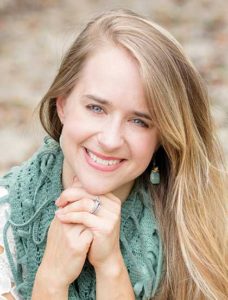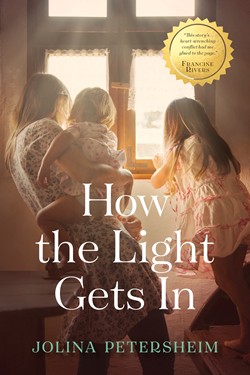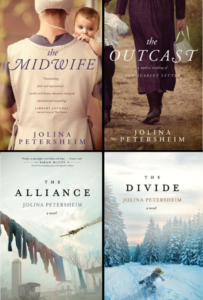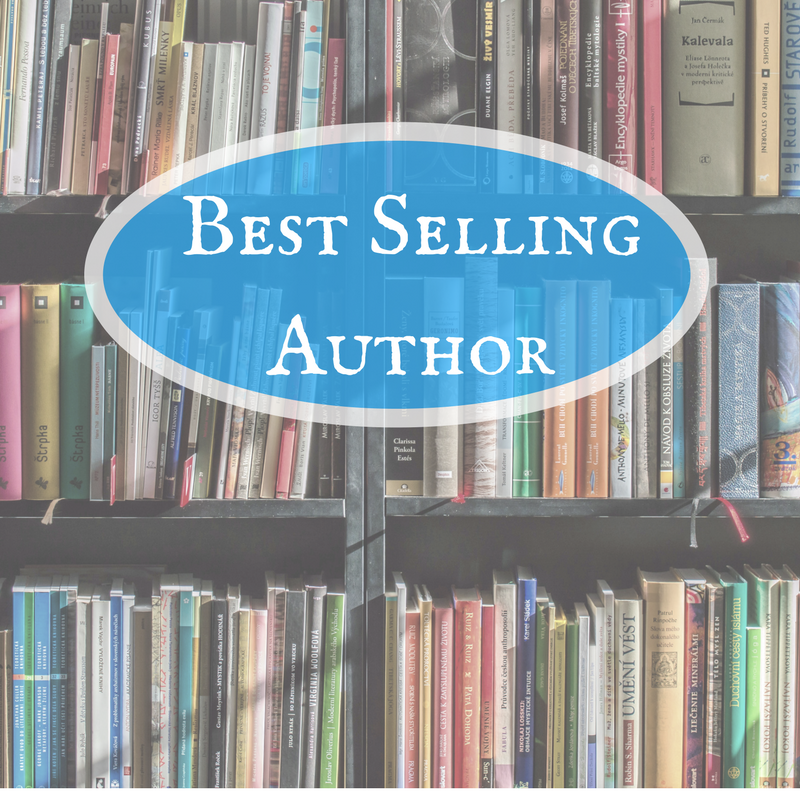
Jolina Petersheim is the bestselling author of How the Light Gets In, The Alliance, The Midwife, and The Outcast, which Library Journal called “outstanding . . . fresh and inspirational” in a starred review and named one of the best books of 2013. That book also became an ECPA, CBA, and Amazon bestseller and was featured in Huffington Post’s Fall Picks, USA Today, Publishers Weekly, and the Tennessean. CBA Retailers + Resources called her second book, The Midwife, “an excellent read [that] will be hard to put down,” and Romantic Times declared, “Petersheim is an amazing new author.” Her third book, The Alliance, was selected as one of Booklist’s Top 10 Inspirational Fiction titles of 2016. Jolina’s nonfiction writing has been featured in Reader’s Digest, Writer’s Digest, and Today’s Christian Woman. She and her husband share the same unique Amish and Mennonite heritage that originated in Lancaster County, Pennsylvania, but they now live in the mountains of Tennessee with their three young daughters. She blogs regularly at jolinapetersheim.com
Can you share a little about your recent book?
My newest novel, How the Light Gets In, is a contemporary spin on Ruth set on a cranberry farm in a Wisconsin Mennonite community.
Why do you write? Do you have a theme, message, or goal for your books?
I write to understand my own heart, and from that understanding, to draw closer to the heart of God. My themes change as my personal journey changes. I’ve explored the devastation of family secrets (The Outcast), motherhood (The Midwife), the divide between trust and action (The Alliance series), and marriage during the young parenting years (How the Light Gets In).
How long have you been writing?
I’ve been “writing” since before I could read. My father was a carpenter by trade and a songwriter in his spare time. Therefore, I grew up being immersed in music and language. This, combined with always having my nose in a book, made me want to be a writer.
And how long did it take you to get your first major book contract? Or are you published non-traditionally? How did that come about?
I got my first book contract for my debut, The Outcast, when I was twenty-five. My eldest daughter, now seven, was only twelve weeks old. The Outcast was my third “novel,” but the first I ever submitted to an agent. I met my agent at an author reading for our mutual friend because we both have distinctly Pennsylvania Dutch last names, which aren’t often heard around Nashville. He asked what I was working on, and the rest, as they say, is history. He’s been my agent for the past seven years. I admire how he treats everyone with respect and kindness.
How long does it take
you to write a book?
Well, my pace has slowed with each child (my husband and I now have three girls).
I wrote The Outcast in six months; How the Light Gets In took two years.
The beauty of the writing/life journey is that even though I’m a slower writer,
my children are teaching me how to live.
What’s your writing work schedule like?
Right now, I wake at 5, write until 6:30, get my firstborn daughter off to school, and then write again at 2, which is nap time/quiet time for my two younger daughters. I try to wrap everything up when my eldest daughter gets home at 3:15. That’s certainly not a lot of time to work on a manuscript, but I have found that slow and steady helps me reach The End. Of course, my writing schedule often changes due to sickness (like this week, when we’ve been passing around a respiratory virus), field trips, and book signings, but the key is to jump right back in when I’m able. I love having a creative outlet that works around my family’s life.
Do you have an interesting writing quirk? If so, what is it?
Well, for years I’ve been writing at the kitchen table (which is where I am now). The kitchen table is our family’s hub, and I like to be in the center of everything, so my family doesn’t feel like I’m choosing my art over them. Plus, who knows what my children would get into while I was in a closed room.
What has been your greatest joy(s) in your writing career?
Yesterday, a reader at a book signing showed me a dog-eared section of How the Light Gets In, where Mabel is giving marital advice to Ruth. Another friend rewrote one of Ruth’s letters and sent it to her husband, which served as a medium to help them reconnect. Another friend told me her parents listened to the audiobook version of Ruth’s story while on their way to the beach, and their marriage—at one point—had been severely strained. I love using stories to bring connection and clarity to relationships.
What was your darkest moment(s)?
At the end of 2014, my husband had emergency brain surgery to remove a benign (non-cancerous) tumor. My darkest moment didn’t happen the night before his surgery but the two weeks after it. He was still not well, our children were sick, and the snow was piled up outside our little Wisconsin farmhouse. I remember standing at the window and staring out at that snow. I prayed, and I prayed, and then I walked into the playroom and stretched myself across the guest bed, too tired to cry. That night, our entire household slept, which is no small feat with a newborn and a two-and-a-half-year-old with croup. Looking back, I see that moment as a pivotal shift in my relationship with God. He went from this distant paternal figure to someone who came close to me when I called His name.
Which of your books is your favorite?
Right now, I would have to say How the Light Gets In, but that might be because it most closely reflects my stage of life while trying to juggle marriage, motherhood, and creativity.
Who is your favorite author to read?
Ah! That is always hard for me to answer. I read widely, so I love discovering new authors—or at least authors who are new to me. I recently read and thoroughly enjoyed a forthcoming novel called Call Your Daughter home by a debut author named Deb Spera. I met Deb when we sat beside each other at a book signing in Atlanta. She said her novel was about the “ferocity of motherhood,” so I told her I needed to read it! Call Your Daughter home has beautiful language, an electric atmosphere, and a thread of justice that pulls everything bowstring tight. I loved it.
What advice can you give aspiring writers that you wished you had gotten, or that you wished you would have listened too?
I would tell aspiring writers that no part of the process—writing process and life process—is ever wasted. Not the rejection slips filed in a recipe box. Not the manuscript on a thumb drive that will never see the light of day. I had a goal to be published by twenty-five. I received my first book contract at twenty-five, and though I am extremely grateful for getting an early start, I would tell myself to relax a little more and to enjoy the journey.
How many times in your career have you experienced rejection? How did they shape you?
I’ve experienced rejection more times than I can count. However, I believe we really find out who we are in those moments. Are we going to be the kind of person who just wallows in bed with a piece of dark chocolate (though chocolate is never a bad idea), or are we going to pull ourselves up by our muck boots and get back out there? I do believe it’s important to acknowledge pain, whether large or small, process that pain, and then leave it once it’s processed. Rejection is part of life. Pain is part of life. But it doesn’t have to define you.
Do you have a favorite character or scene in one of your books?
I love tucking my personal experiences into my fiction. When I was seventeen, I did a short-term outreach at an orphanage in Bogotá, Colombia, with my future husband and his family (though he wasn’t even my boyfriend at the time). We visited this beautiful stone house while we were there with an orange roof. It had a large round table with a circular skylight above. I remember joking that I wanted to come there for my honeymoon one day. Well, in How the Light Gets In, I placed my characters Ruth and Chandler there for their honeymoon. There’s this one scene where the two of them dance on the table and kiss beneath that circular piece of sky. It was as if my husband and I got to go back there, if only for a moment.
Where do you get your ideas?
My ideas take time to percolate. For instance, I’d been thinking about writing a contemporary spin on Ruth since I took a snowy Wisconsin walk with my firstborn daughter, who was only a baby. I imagined a woman coming there after having lost almost everything. Later, when I put my daughter down for a nap, I had the idea of Ruth. It only took me six years to publish it!
What are common mistakes you see aspiring writer’s make?
Well, I won’t call out anyone else’s mistakes, but I will share mine. Comparison is one of the greatest downfalls in the business. It is easy to get our identity in our book’s success (or lack thereof), and either success or failure can be debilitating if this is our foremost goal. However, when we keep our eyes focused on the ultimate Author and His unconditional love for His fellow creatives, everything else clicks into place.
Where/How do you recommend writers try to break into the market?
Social media is always a great way to connect, but there is truly nothing like face to face interaction. Any creative pursuit requires us to consistently step outside of our comfort zones. Even the most embarrassing experiences can later be turned into funny stories. So, go for it!
Jolina’s books can be found at Barnes and Noble, Books a Million, Powell’s, IndieBound.org, Amazon, Christianbook.com, Target.com, Walmart.com.


Please check out Jolina’s social media below:
Facebook: jolinapetersheimauthor/
Instagram: jolinapetersheimauthor/
Twitter: Jolina_Joy
Pinterest: JolinaPetershei/
Goodreads: .Jolina_Petersheim





3 Comments
Thank you so much for letting me visit with you!
It is always an honor to share the advice of talented and successful authors with our readers. Thanks for sharing your story with us.
Thanks for this great interview! I love How the Light Gets In. 🙂